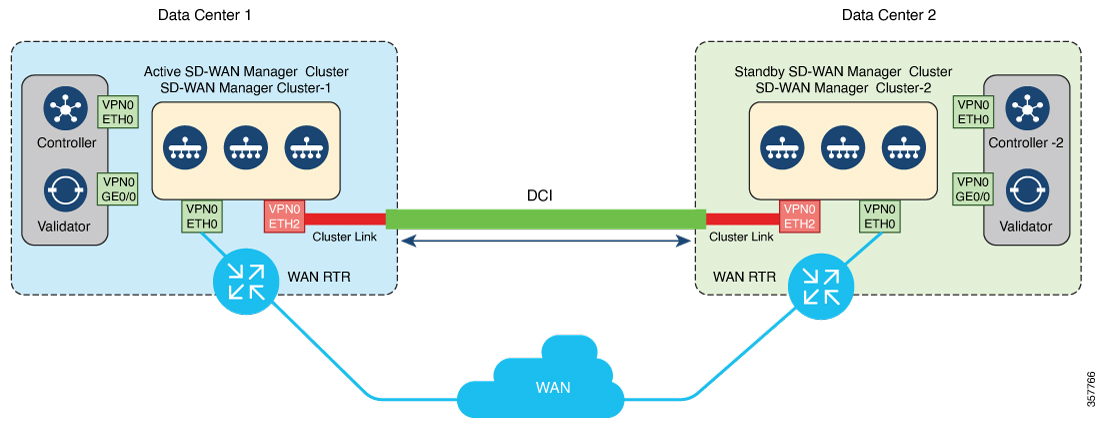Information About Disaster Recovery
Of the three controllers that make up the Cisco Catalyst SD-WAN solution (Cisco SD-WAN Manager, Cisco Catalyst SD-WAN Controller, and Cisco Catalyst SD-WAN Validator), Cisco SD-WAN Manager is the only one that is stateful and cannot be deployed in an active/active mode. The goal of the disaster recovery solution is to deploy Cisco SD-WAN Manager across two data centers in primary/secondary mode.
Disaster recovery provides an administrator-triggered failover process. When disaster recovery is registered, data is replicated automatically between the primary and secondary Cisco SD-WAN Manager clusters. You manually perform a failover to the secondary cluster if needed.
Disaster recovery is validated as follows:
-
For releases earlier than Cisco IOS XE Catalyst SD-WAN Release 17.4.1a and Cisco SD-WAN Release 20.4.1, disaster recovery is validated for a three-node cluster.
-
In Cisco IOS XE Catalyst SD-WAN Release 17.4.1a and Cisco SD-WAN Release 20.4.1, disaster recovery is validated for a six-node cluster.
-
In Cisco IOS XE Catalyst SD-WAN Release 17.5.1a and Cisco SD-WAN Release 20.5.1, disaster recovery is validated for a deployment with a single primary node.


 Feedback
Feedback